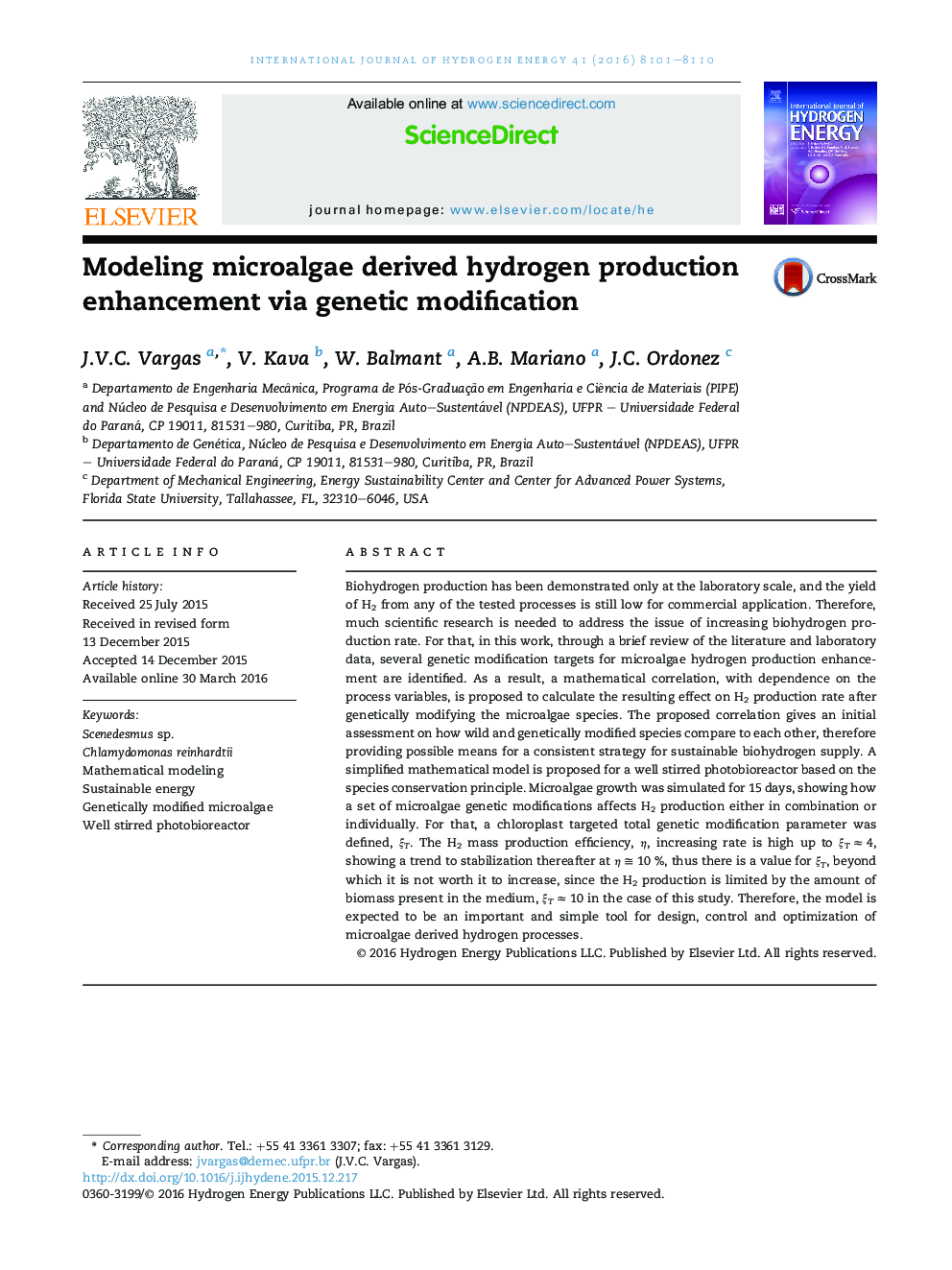| Article ID | Journal | Published Year | Pages | File Type |
|---|---|---|---|---|
| 1277304 | International Journal of Hydrogen Energy | 2016 | 10 Pages |
•We introduce a transient mathematical model for microalgae hydrogen production.•Hydrogen production with dependence on genetic modification is assessed by the model.•The process H2 production rate is assessed with respect to cultivation time.•The H2 mass production efficiency is assessed with respect to genetic modification.•The model allows for design, control and optimization of biohydrogen production.
Biohydrogen production has been demonstrated only at the laboratory scale, and the yield of H2 from any of the tested processes is still low for commercial application. Therefore, much scientific research is needed to address the issue of increasing biohydrogen production rate. For that, in this work, through a brief review of the literature and laboratory data, several genetic modification targets for microalgae hydrogen production enhancement are identified. As a result, a mathematical correlation, with dependence on the process variables, is proposed to calculate the resulting effect on H2 production rate after genetically modifying the microalgae species. The proposed correlation gives an initial assessment on how wild and genetically modified species compare to each other, therefore providing possible means for a consistent strategy for sustainable biohydrogen supply. A simplified mathematical model is proposed for a well stirred photobioreactor based on the species conservation principle. Microalgae growth was simulated for 15 days, showing how a set of microalgae genetic modifications affects H2 production either in combination or individually. For that, a chloroplast targeted total genetic modification parameter was defined, ξT. The H2 mass production efficiency, η, increasing rate is high up to ξT ≈ 4, showing a trend to stabilization thereafter at η ≅ 10 %, thus there is a value for ξT, beyond which it is not worth it to increase, since the H2 production is limited by the amount of biomass present in the medium, ξT ≈ 10 in the case of this study. Therefore, the model is expected to be an important and simple tool for design, control and optimization of microalgae derived hydrogen processes.
